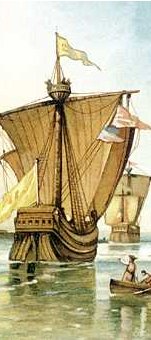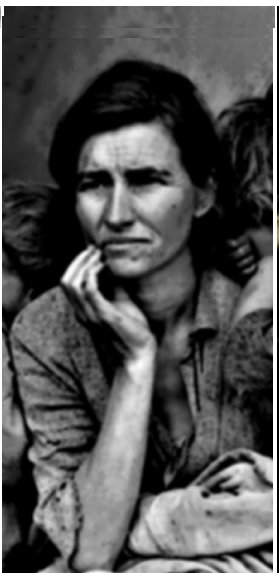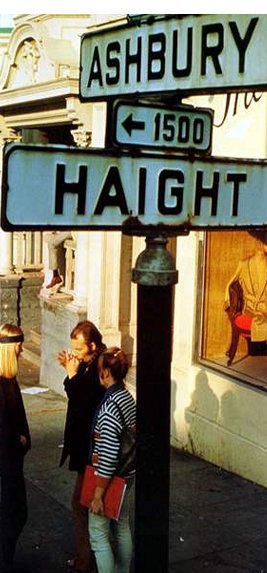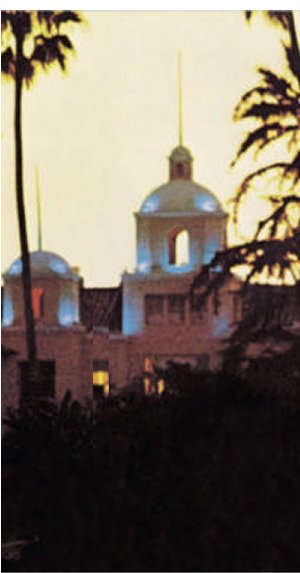Walt Disney Sydney Packer
Bob Thomas was born in 1922. Immersed in the entertainment
industry, Thomas became engaged in writing. He appeared on a couple television
shows, but his fame came from his biographies and film histories. Thomas has
written biographies for Walt Disney and Joan Crawford. He has also contributed
his efforts in countless E! True Hollywood stories. His
lack of knowledge of the entertainment history is remarkable.
Walt Disney. When one hears this
name, thoughts of Mickey Mouse, Disneyland and
entertaining, family friendly movies comes to mind. But how much does the
public truly know about this world famous entrepreneur? Bob Thomas��s biography�XWalt
Disney: An American Original�X��reveals the Walt
Disney his animators knew. An uncomplicated man.��1 Thomas��s
detailed account gives insight into Disney��s life before, during, and after his
fame and fortune; the good and the bad; the setbacks and the strides. Most
intriguing, Thomas insists and reiterates countless times Walt��s unending
determination to make it big in Hollywood,
no matter how many seemingly great contracts he had to turn down. Every
event�Xhowever insignificant it may be�Xplayed a role in Disney��s life and Thomas
approaches every account with equal respect.
Thomas
does a thorough job of detailing Walt Disney��s upbringing in beginning of the
first unit of the book. Growing up, Walt recalls vivid memories of ��Fairmont
Park, a place of amusement two blocks from his Kansas City [Missouri] home.��2 Disney
showed a large fascination with the entertainment world at a young age,
although his father never understood or sympathized with Walt��s ambition to be
a cartoonist. Thomas goes on to narrate Walt��s early jobs as a cartoonist and
his move westward to up and coming Hollywood. After arriving in Hollywood, Disney concluded that the only way he could break into
the movie industry was with cartoons. At the end of the first unit of the
biography, Thomas details Walt Disney��s venture into the world of
entertainment. Disney believed that Alice��s Wonderland�Xwhich he had created back in Kansas City�Xwould be his ticket in. Walt soon learned that he could
not achieve success all on his own. His brother, Roy, after being heavily
persuaded by Walt, jumped onboard and together the two brothers opened a small
store at 4649 Kingswell. ��The store window bore the
letters: ��DISNEY BROS. STUDIO.��3 Thomas
describes Disney Bros. Studio��s success with the Alice Comedies. Walt sent a
letter to a cartoon distributor in New York, Margaret Winkler, asking if she would be interested in
his cartoons. The brothers signs a contract with Winkler for a distribution of
six Alice comedies�Xthe first one reaching theaters in March 1924.
Walt decided to step back from personally animating the cartoon and hired USB
Ewers�Xa top notch animator from Kansas City�Xand devoted his full time to gags
and stories; ending his career as an animator. Thomas��s insight on the young
animator��s life continues as Walt proposed to Lillian Bounds, a young woman
working ��at the Disney Bros. Studio, applying ink and paint to the cartoon celluloids���Xmoved the studio to a lot at 2719 Hyperion
Avenue�Xwhere the brothers planned to build a lager studio�Xand signed new
contract with a distributor that coincided with the move.4
Roy Disney, who largely ran the financial side of the business, reasoned that a
single name would have more box-office appeal and identification, and so the
Disney Brothers Studio became the Walt Disney Studio. Thomas focuses on the
creation of Oswald the Luck Rabbit, who filled Walt with hope that the
distributors would continue to back the Walt Disney Studio. Oswald attracted a
special audience: the cartoon animators of New York City�Xwhose professionalism centered the entire animation
business in New York. The popularity of Oswald prompted offers for the use of
the character on merchandise, a first for Walt Disney��s career. But Oswald��s
success did not translate into the renewal negotiations of Universal and the
Walt Disney Studio. The depleting price per cartoon would mean a loss for the Disney
studio, and ultimately Walt turned down the contract, vowing ��never again will
I work for somebody else.��5
The death
of Oswald��s short-lived career led to the birth of Mickey Mouse, and marked a
new chapter in Walt Disney��s successful life. Thomas narrates Walt��s greatest
creation in tremendous detail throughout the second unit of the book.
Originally named Mortimer Mouse, but rejected by Lillian, Mickey Mouse appeared
to be collaborative inspiration between Walt Disney and Ub
Iwerks. Surprisingly, MGM congratulated Disney on the
cartoon, but made no offer to distribute the big-eared mouse. Finding no
immediate success, Walt needed an edge that no one else had thought of. In one
question�X��how the hell do we match the sound to the action of the cartoon?���XMickey
became the newest thing.6 Except for a few
failed attempts, the motion picture has been mute
throughout history. As music played, Walt calculated how many frames of cartoon
would be required to match the tune�Xtwenty-four frames per second. Walt traveled
to New York, Thomas goes on to reveal, but Fox was too busy to deal
with a small cartoon maker from the West Coast and Walt disliked RCA and
Universal��s offers. But despite the constant rejection of Mickey Mouse, Walt
witnessed the growing popularity of Mickey Mouse on his next visit to New York. Mickey flourished into a national craze and in 1929;
Mickey Mouse Clubs sprang up all over the country. Moviegoers looked forward to
the next installment of Mickey Mouse. Walt immersed himself in the improvement
of the quality of his cartoons. Thomas speculates that this is most likely what
contributed the most to Disney��s nervous breakdown in late 1931. Walt was known
for challenging his artists and although many rose to meet the challenges,
others did not. Each failure was a personal defeat to Walt. Financial troubles
returned to the Walt Disney Studio and the jubilation that came along with the
beginning of a contract with Columbia was wearing off. Money worries and the stress of leading a
group of hot-blooded, talented artists began to affect Walt. Thomas describes
Walt��s behavior as ��irritable with his employees, snapping at them for minor offenses.��7 Lillian and Walt took a vacation to
clear his mind and when he returned to Hollywood, he seemed like a new man. Disney's behavior improved
along side his physical health. Thomas states that by 1931, the Mickey Mouse
Club had a million members and that the friendly big-eared character was known
in every civilized country of the world. The commercial salesmanship of Mickey
Mouse seemed miraculous. The success of Mickey brought changes to the Hyperion
studio. New offices were constructed in 1930, and in 1931 the new Animation
Building and sound stage was completed. Veteran animators left New York to join the exciting new Disney team. Not even thirty
years old yet, Disney had worked in the cartoon business for a dozen years and
some of his subordinates had worked longer in New York, but viewed him as a ��leader to be followed, and obeyed.��8 Animation�Xalong with Walt Disney
Productions�Xleaped forward in 1933 with The Three Little Pigs. The cartoon
about three pigs who each build their homes out of straw, sticks, and brick and
are attacked by a wolf reached success that was unparalleled in cartoon
history. In November 1932, the Academy
of Motion Picture Art and Sciences gave its first award for a cartoon to Walt
Disney for Flowers and Trees; Walt was also presented a special award for the
creation of Mickey Mouse. All of this recognition and success only added fuel
to the fire that was burning underneath Walt Disney��s creative mind.
In 1934,
Thomas states, the Disney staff had grown from six to 187. The third section of
Thomas��s book addresses the creation of the empire of Disney movies. Walt could
never explain why he chose Snow White and The Seven Dwarfs for his first
feature length film. His initial estimate of $500,000 for Snow White proved
ridiculously low; the film would end up costing three times that amount, Thomas
reports. On December 21, 1937, Snow White and the Seven Dwarfs premiered at the Carthay
Circle Theater in Los
Angeles. Basking in
the success of the movie, Disney is reported to have said ��Sometimes people
make you mad, and you want to prove something to them even though they mean
nothing to you. I thought of the guy on the back platform when we had the
premiere of Snow White.��9 Walt
accomplished his attempt at proving himself to the people that had upset him
over the year when Snow White grossed eight million dollars Snow White
indicated the direction in which the Disney organization had to go. That year,
Disney won an Oscar for Snow White, bringing new fame to Walt, and he found
himself getting recognized when he appeared in public. Following in the wake of
Snow White��s great success other Disney movies popped up one after the other:
Pinocchio�Xthe story of a wooden toy turned into a real boy; Bambi�Xthe much more
serious Disney film, in which all the characters are animals; Fantasia�XMickey
Mouse��s new installment; and Saludos Amigos and The
Three Caballeros�Xtwo films centered around Latin American culture and stories.
In December 1941, military police officers took over the Walt Disney Studios in
order to use the buildings as a base. With army units using the building as
housing for eight months, the fast paced production of movies decreased
rapidly. Walt abandoned preparations for Alice in Wonderland and Peter Pan and shut down animation on
Wind in the Willows. The Disney Company, pressured by the hovering military
personnel, started producing animated war films�Xthe most famous being Der Fuehrer��s Face, featuring
Donald Duck and his friends comically singing in saluting Hitler.
The fourth and
fifth sections of Thomas��s biography center around the creation of Disneyland, and later, Walt
Disney World. Disneyland is one of Southern
California��s main tourist attractions. Thomas describes each step
of designing the themed amusement park. As Walt Disney Studios returned to
making films geared towards family entertainment, Walt set out to make an
amusement park that could appeal to everyone, young and old. He wanted to make
a ��place where parents can bring their children�Xor come by themselves
and still have a good time.�� 10
Thomas�Xwho personally knew the Disney family�Xrecalls Walt visiting county and
state fairs, circuses, carnivals and national parks around the nation in order
to study people responded to attractions, measure the walkways and observe how
traffic flowed. Walt was particularly interested in the movement of people. He
wanted his park to be comfortable and relaxed. The design of Disneyland�Xas they
would call it�Xwould consist of six realms: True-Life Adventureland,
which would feature botanical gardens and the Rivers of Romance; The World of
Tomorrow, containing moving walkways industrial exhibits, a monorail, and a
freeway where children could drive; Lilliputain Land,
including the Erie Canal barge ride where riders would go through famous canals
and pass miniature towns with nine-inch people; Fantasyland, located within the
ways of a medieval castle, featuring King Arthur��s carousel, and rides
featuring Snow White, Alice in Wonderland and Peter Pan; Frontier County, with
an authentic frontier street, stagecoach, pony express and a river boat that
takes you on a lazy river ride; and Holiday Land, which would offer special
attractions with the changing seasons. [1]1
On July 18, 1955, Disneyland
opened its gates to the public and Walt was surprised by the overwhelming
amount of people in attendance. Within seven weeks, over a million people had
come to Disneyland. A few years later, Walt��s theme park
was still receiving an immense amount of attention and it led him to think of
opening another one on the other side of the country. Walt Disney World�Xwhich
it would be called later on�Xwas to be built in Orlando
Florida. Sadly, Walt died before he could
see the construction of the new amusement park. His older brother Roy took the
lead on the project after his brother��s death. Roy
witnessed the opening of the park, but unfortunately died only five short years
after Walt.
Thomas��s thesis is clearly stated
in the foreground of the book. ��This biography will attempt to trace the
development of his creative processes, together with a picture of the man and
his time��. 12 With the successes and
failures of Walt Disney��s career, Thomas examined his personality, social life
and business relationships. Thomas writes for the reader to understand the
significance of what this man��s life has left for the rest of the world. Thomas
aspires for the reader to enjoy reading about Walt��s creations, but to really
learn who the man behind the mouse was, as well. As a successful entrepreneur,
Walt set a high standard for other animators of the time. Thomas has the
details that very few have access to--having been granted access into the Disney
archives�Xand personally knowing Walt Disney. This historiography seems clear;
while not published until 1976, the achievements of Walter Disney have
resonated throughout the world since the 1930s.
Numerous critics have had the
opportunity to read and review Thomas��s Walt Disney: An
American Original. Marshall Deutelbaum of the
Library Journal commented in 1976 that ��Disney��s life many not have been
entirely exemplary, as Thomas suggests at several points.�� 13 Whit Stillman of
the National Review in 1980 is not quite as harsh on Thomas��s book in saying
that Thomas has ��produced a more comprehensive and straight-forward biography.�� 14 Both reviews compare Thomas��s book with
Richard Schickel��s book The Disney Version: The
Life, Times, Art and Commerce of Walt Disney. Negatively portraying Disney,
Schickel��s book is disliked in both critiques. While
on the other hand, Thomas��s book is talked of highly and it is no secret that
both writers would prefer Thomas��s.
The influence of the Eastern
United States is apparent in Walt Disney��s work. From early on,
Walt was always looking towards New York,
where the cartoon industry was centered around, for
approval and critique. It was only until after the release of Snow White and
the Seven Dwarfs that some patrons from New York City
eagerly wanted to work for Disney. But still, it was no walk in the park for
Disney to find distributors. Turned down numerous times, it was obvious to Walt
that big New York corporations
had no time for a small animator from the West Coast.
California
proved to be the place for Walt. Opportunities surrounded him in Hollywood
as ��films were approaching the status of an industry�� and he thrived in the
entertainment business.15
He was able to open a studio close to the hub of the movie industry and was
accepted by Hollywood, while at the
same time New York rejected him. Southern
California also provided the area where his dreamed of amusement
park would materialize. Disney��s success drew attention to the little city of Anaheim
as the rest of the United States
anticipated the next installment of Disney entertainment. Walt had originally
asked Thomas ��to write a book about the animation at the studio.�� 16 With a head start on the biography, Thomas
got to know Walt on a personal level. Thomas realized that the picture of Walt
Disney in the public mind changed during his lifetime and afterwards. At the
beginning, he was viewed as an inventive, creative genius whose work was
admired by intellectuals as well as the masses. From Disneyland
on, he became more of a builder and a cosmic dreamer. Twenty-five years after
his death, the figure of Walt Disney has grown more remote. The creator of the
huge Disney enterprise needed to have his story told straight. So Thomas looked
toward California to provide him
with the information he needed.
Bob Thomas��s Walt Disney: An
American Original offers a clear depiction of a historical figure who left
a mark on the entire civilized world. The details offered and the events
described come from real life accounts and the memories of Walt��s family and
close friends, ��who wanted to see Walt��s story written.��17 A young boy drawn to Hollywood by the enticing lure of the entertainment business ended
up being one of the most famous names in modern day history.
1. Thomas, Bob.
Walt Disney: An American Original. New York: The Walt Disney Company, 1994: 10.
2. Thomas, Bob
33.
3. Thomas, Bob
73.
4. Thomas, Bob
77.
5. Thomas, Bob
86.
6. Thomas, Bob
90.
7. Thomas, Bob
104.
8. Thomas, Bob
111.
9. Thomas, Bob142.
10. Thomas, Bob
111.
11. Thomas, Bob
247.
12. Thomas, Bob
18.
13. Deutelbaum, Marshall. "Thomas, Bob. Walt Disney."
Library Journal (1976): 1877.
14. Stillman, Whit. "Walt Disney: An American Original, by
Bob Thomas." National Review (1980): 488-89.
15. Thomas, Bob
69.
16. Thomas, Bob
6.
17. Thomas, Bob 5.





















